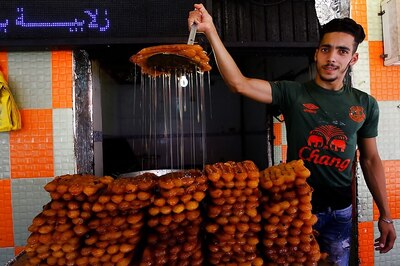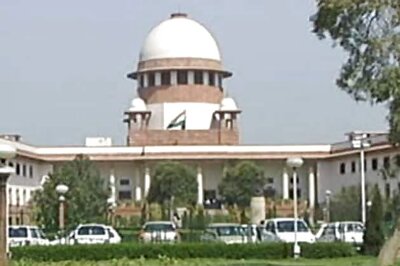
views
New Delhi: The Centre on Monday named four districts of Punjab for contributing to 47 per cent of stubble burning incidents. These include Bathinda, Sangrur Patiala and Tarn Taran districts of the vast Malwa belt of Punjab.
The Malwa belt of Punjab is one of the three major regions including Majha and Doaba that make up the state. It is located south of the river Sutlej and make up a majority of Punjab region consisting 11 districts.
Famous mainly for cotton farming, the belt includes cities like Ludhiana, Rupnagar, Patiala, Mansa, Firozpur, Moga among others. Besides cotton, the Malwa belt also produces large quantities of paddy.
Food and trade policy analyst Devinder Sharma told News18 that it is primarily the small and marginal farmer that are contributing to stubble farming. He, however, reminded that stubble burning has increased due to the rise in combine harvester machines because of mechanisation in the region.
“The area under stubble burning increases with the increase in number of combine harvester machines. It is because when the machine operates it leaves behind a stock of 1 feet standing. This is the stubble that the farmer has to cut despite the use of technology and machinery,” he said.
Sharma suggested that much of the issue of stubble burning is due the corporate nexus behind the capitalisation of technology and labour in Indian agriculture. “We need 1 lakh tractors in Punjab, but we have 4 lakh. We are pushing six machines to the farmer to harvest and sow. They are forced to constantly update the technology,” he said.
Last year, under a Centrally Sponsored Scheme (CSS) more than 28,000 Happy Seeder machines were sold in Punjab. These tractor-operated machines, costing around Rs 1.5 lakh, were developed by the Punjab Agricultural University so that farmers can directly sow seeds, without losing the stubble’s organic value.
The paddy is first harvested using a combined harvester or tractor of 55 horsepower and more, fitted with state mandated Super SMS (Stubble Management System) equipment. Despite the subsidies, heavy agricultural equipment cost between Rs 14 lakh and Rs 22 lakh on average. The Centre gives 80 per cent subsidy to cooperatives for the purchase of Happy Seeder, while individual farmers are given 60 per cent subsidy.
However, farmers in Punjab have voiced strongly against the Centre’s non-cooperation to provide them compensation of Rs 200 per quintal to manage stubble by employing labour instead of giving subsidies on equipment. As a mark of protest, farmers in Punjab’s Mansa district burned stubble last week.
In addition to issues related to machinery, stubble burning in Malwa belt also arises from the kind of crop grown, farmer rights activist Ramandeep Singh told News18.
“More than 30 lakh hectares is under cultivation in Punjab this season. Of this figure, around 6 lakh hectare has basmati rice growing, while the rest is paddy. Basmati can be harvested by hand. The problem mostly arises with harvesting paddy with SMS machines,” he said, reasoning why unaffordability of equipment and cropping pattern make a bad combination.
Here, Jagmohan of the Bharatiya Kisan Union provides details. “Sangrur district has highest percentage of paddy production while Patiala comes on the second spot in paddy cultivation. More stubble burning witnessed here in these districts. In Tarn Taran, farmers also sow advanced variety of paddy. They go for large-scale cultivation of peas as well thus leading to more stubble burning,” he said.
He pointed out that the Captain Amarinder Singh’s government allowed advance sowing of paddy by 10 days due to the elections this year. “This has aggravated the problem by this time of the year. It should be mitigated by mid-November.”
As a solution to the present problem, Singh opined that Punjab could also attempt to grow more pulses like maize. “Paddy residue contain silica which makes them an unattractive fodder option for livestock. The livestock problem does not arise in Haryana because they have an option to grow wheat,” he said.
The farmer rights activist suggested that the Punjab government could consider giving a Minimum Support Price (MSP) in maize production given that the Centre government last year released a notification allowing ethanol production from maize. Ethanol is used for blending in petrol production and thus more maize production and lesser paddy production is a viable option for both the economy and the environment, he added.
The Supreme Court of India on Monday came out strongly against the failure of various agencies in controlling stubble burning leading to grave danger to life in the North of the country specially Delhi NCR region.
Delhi and parts of northern India took a breath of relief when on Tuesday the Air Quality Index (AQI) was reportedly better than the past six days. The AQI reported across Delhi and nearby areas was reported between “very poor” to “severe” category over the past few days, according the Central Pollution Control Board (CPCB).




















Comments
0 comment